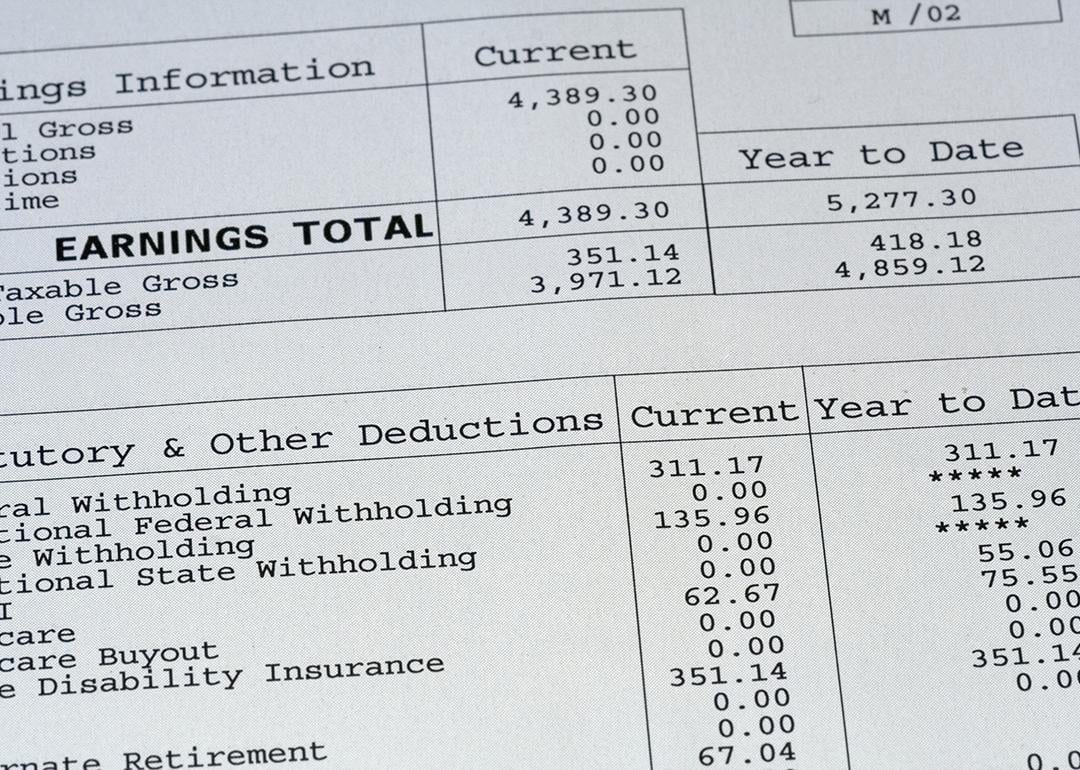
How to spot a fake pay stub
How to spot a fake pay stub
Rental application fraud is on the rise, and today’s landlords need to know how to spot red flags and false information, including fake pay stubs. These days, it’s easier than ever thanks to AI for renters to fake important documents when applying for rental properties.
Submitting a phony pay stub is a popular choice for renters when they’re interested in a listing, but don’t have the income to qualify. There are even websites that renters can use to create fake pay stubs showing higher wages easily. In these situations, unsuspecting landlords may end up approving an unqualified applicant because the renter deceived them. Now you’ve got problematic rent collection, late payments, unpaid balances, or eviction.
Since these types of rental application scams put your investment at risk, landlords need to recognize fake pay stubs while screening tenants. Scammers design forged pay stubs to look legitimate, making them nearly indistinguishable from the real thing — but there are telltale signs that give away the fakes.
Here’s a guide to help you spot fake pay stubs. TurboTenant will cover the key giveaways of a fake pay stub, including:
- Perfectly rounded numbers
- Unprofessional document formatting
- 0’s and O’s used interchangeably
- Inconsistent information
How to Spot a Fake Pay Stub (ADP or Not) Like a Pro
Start examining every applicant’s documents and pay stubs like an expert. Ask yourself these four questions to identify fake income and employment information.
1. Does it make cents?
When going over a rental application, begin by checking the total amounts on the applicant’s pay stubs. If the hourly wage and monthly earnings are perfectly rounded to the nearest hundred or thousand with no extra dollars or cents, it signals a false pay stub. Authentic pay stubs are rarely perfectly rounded, especially when taxes and employee benefits are deducted.
2. Does it look professional?
In most companies, accountants and HR staff create pay stubs. These documents are usually neat and tidy, making them easy to understand at a glance. When reviewing a pay stub, always zoom in on the small details. Look out for these warning signs to spot a fake:
- Blurry text
- Different color backgrounds in certain areas
- Typos
- Inconsistent text alignment, font size, and color
- Messy document formatting
3. Is there a difference between 0’s and O’s?
All the pros know this telltale sign. There should always be a clear difference between a capital O and the number zero. Capital O’s should be clearly rounded and circular, while zeros should be slightly taller and oval-shaped. If there’s no distinguishable difference between these characters, consider it highly suspicious.
4. Is the basic information consistent?
Since pay stubs are official documents, they should contain personal and employer information, including:
- Employee’s name and address
- Social Security number
- Employer’s name and address
- Pay period start and end date
- Gross wage
- Salary amount
These details usually appear in multiple places throughout the document. If you find inconsistencies or errors throughout, you might be dealing with a fake pay stub.
How to Spot a Fake W2 in 3 Easy Steps
Rental application fraud goes beyond fake pay stubs. Applicants often try to pass off forged W-2 forms as fake proof of income. Here’s how to spot them.
1. Dot Your I’s and Cross Your T’s
Run through the list above and check for the same issues:
- Are numbers perfectly rounded?
- Does the document look professional?
- Are there blurry text, inconsistent fonts, or misalignments?
- Is there a clear difference between O’s and 0’s?
- Is the basic information consistent throughout the document?
After viewing the W2, cross-reference the information with the pay stub they submitted. Make sure all details, including employee name and address, gross income, salary, and hourly wage, match up between the two documents.
2. Confirm Employer Information
Always conduct due diligence to verify the employer information. Researching the company is one of the easiest ways to identify a fake W-2. Look up the company’s website, reviews, and Better Business Bureau (BBB) rating. Here’s what you should check on:
- Is the company based in the U.S., or do you need to confirm if the applicant is a remote employee?
- Does the website seem credible?
- Does the information you find online match the details of the applicant’s submitted documents?
These findings can tell you if the pay stub is from a real, legitimate business.
3. Verify Applicant’s Employment Status
The final step to verify a W-2 is to contact the employer. Call the company’s main phone number or the employer reference (if provided). Legitimate employers will be able to confirm the applicant’s employment status and hire date.
Before calling an employer reference, make sure the phone number matches the contact information you can find online. This step ensures you’re calling a real company representative, not the scammer’s partner in crime.
Steps to Take If You’ve Received a Fake Pay Stub
In most states, false or inconsistent information on an application gives landlords grounds to deny a renter immediately. If you believe an applicant submitted a fake pay stub, you can either reject the application or reach out. Here’s what to do:
- Inform the renter that you’re having trouble verifying their income with the documents they submitted.
- Request additional documents to verify their income, including two months of bank statements and/or tax returns from the last two years.
- Set a due date for submitting these documents.
Feel like a fake pay stub has slipped past you, and you’ve already accepted the applicant? Seek legal counsel before contacting the tenant. By using a thorough tenant screening process for all applicants, you can spot red flags and avoid these situations. You can also use a tenant screening tool to run background, criminal, and eviction checks.
This story was produced by TurboTenant and reviewed and distributed by Stacker.



